What is an eCommerce Platform?
eCommerce Platforms are types of software under which eCommerce transactions take place. They tend to include Open Source, SaaS (Software as a Service), and CaaS (Commerce as a Service.)
In other words:
The best eCommerce websites can be hosted in the Cloud (SaaS), you can Self-Host it in your servers (Open Source eCommerce Platforms), or it can be offered by third-party platforms such as Facebook and Instagram (CaaS.)
How Can eCommerce Platforms Help Business Owners?
eCommerce enables companies and consumers to setup in order to buy and sell products or services on a global scale. Twenty-four hours a day.

Generally speaking, compared to brick-and-mortar stores, most eCommerce stores do not incur the same overhead costs.
eCommerce Platforms Industry Trends Post COVID-19
Post COVID-19, eCommerce is booming in both business-to-consumer (B2C) and business-to-business (B2B) categories.
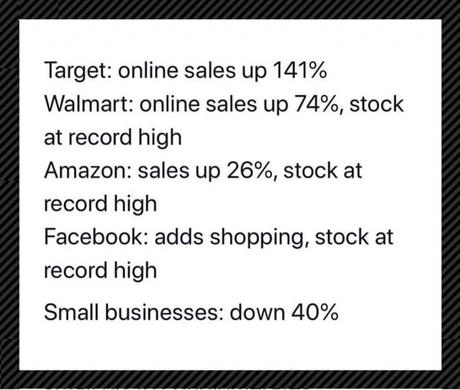
In the B2C eCommerce model, an online retail store sells to the end consumer. But, in the B2B model, the online business sells to another company. Whether offline or online
In both cases, the goal is to enable a business or individual customer to buy anything. At any time, from anywhere, using any digital device.
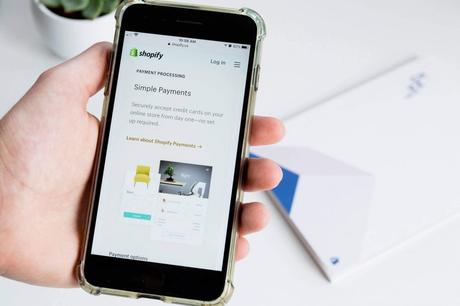
Why Are eCommerce Platforms Important Post COVID-19?
In short...because, the future is now.
Put another way:
To lower the risk of having to close your company's door forever, you must now add an online channel .

Future of eCommerce
Thus, moving forward, an eCommerce store is an essential part of your business success.
They will become a necessary multichannel extension of traditional brick and mortar stores. In some cases, they may replace them altogether.
Furthermore,
Post-COVID-19, selecting the right eCommerce Platform has become an important business decision.
With that explanation out of our way, let's discuss somedifferences.

eCommerce Platforms Guide
The purpose of This Guide is to help you:
- Build a successful Direct-to-Consumer eCommerce business
- Show you how it works for an online business
- Understand the eCommerce website types for e-Tailers
- Understand the eCommerce business benefits
- Choose the most important features
- Build a Direct-to-Consumer eCommerce online store
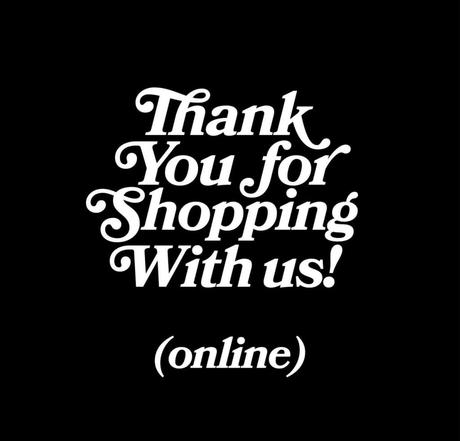
Here are the eCommerce website topics we will go over in this complete guide:
So for starters,
Let's say you search for something to buy on Google (or any other search engine.) You then get offered what that search engine considers the " best " result.
In most cases, you are not looking for the best physical store near you. Instead, you are searching for an online offer that is most relevant to your needs.
And this transition to online buying has accelerated due to COVID-19.
COVID-19 Impact on eCommerce
Look at Amazon's online growth in recent months.
And look at the retail bankruptcies in the same period.
You see,
Your target market is going through the same experience.
It means,
Permanent changes in the supply chains are happening right before your eyes.
In other words,
Due to the rise of the 21st-century brand economy, the consumer economy is shifting. And COVID-19 is making this process even faster.
Retail Havoc Pre & Post Coronavirus
More than 8,600 U.S. retail stores shuttered in 2017. The number of bankruptcies in the U.S. doubled in 2016. And this is for retailers, with at least $250 million in liabilities.
And all this happened BEFORE COVID-19. Imagine what is ahead of us!
Put another way,
Retail sales are shifting from brick-and-mortar stores to digital, Direct-to-Consumer data-enriched channels.
But, What Exactly Is Direct-to-Consumer?
In a nutshell,
Direct-to-Consumer means you are selling your product to your end customers without intermediaries.
Benefits of a Direct-to-Consumer Strategy:
By selling Direct-to-Consumers, brands have full control of their brand image. They are not relying on anyone else to present their products, or position their brand's reputation.
Additionally, top eCommerce sites who sell Direct-to-Consumer, own the relationship with their users and can nurture it over time.
This means,
Economic benefits are shifting to companies that create online value.
In summary: By creating value, Direct-to-consumer brands can build the relationship today consumers demand.
How Do You Create Value With An eCommerce Platform?
First of all, companies will have to move away from the old and ordinary retail experience.
Instead, now it's all about value-creation and customer relationship building. Not only during the sale but before and after as well.
The question is: how can a Direct-to-Consumer business determine " value "?
The answer: First-party data
But what is First-party data!?
It is the information you gathered from your audience. It can come via your website, online store analytics, CRM, and analysis tools.
In other words,
Your first-party data is crucial because it comes straight from your customers, through your online store.
1st-Party Data true value:
First-party data relationships are important not only for their marketing value. But because it fuels all significant functions of your organization.
For example,
Product development, customer value analysis, and pricing.
What Do Successful Online Websites Do That Failing Ones Don't?
They relentlessly go after data.
It is the reason why smart businesses and the best platforms to sell online are in an arms race for first-party data.
You see,
This shift is influencing the strategies of major incumbent brands. And this is happening across all their investment and marketing decisions.
PRO TIP: To build a successful Direct-to-Consumer company, you should aim to . In other words, do not make third-party platforms (such as Amazon) your primary source of sales. Remember, they own their data, not you!
Retail vs. Direct-to-Consumer:
Online businesses work pretty much on the same principle as an offline retail store. Like its offline counterpart, the D2C process can get divided into three main components:
- Order Receiving: This is the first step. Here is where customers place an order through the online store. The seller then receives the purchase request.
- Order Processing: The second step is where the order gets processed and completed. The product is now ready for delivery.
- Order Shipping: Brands must traverse the last three miles. It is the final step where product delivery to the customer takes place.
So what kind of transactions can get processed on these eCommerce Platforms?
Direct-to-Consumer online stores can sell all kinds of things besides physical products. But, there are at least 12 things you can sell on an eCommerce store (Other than Physical Products)
Thing you call sell on an eCommerce Platform:
- Physical products
- Services (appointments)
- Memberships
- Consultations
- Digital products
- Event support
- Experiences
- Classes, lessons, and workshops
- Rentals
- Installations (and quotes)
- Donations
- Event tickets
- Digital gift cards
There is no doubt that eCommerce has increased over the past few decades. But post-COVID-19, it has become a critical part of any business, offline or online.
Difference between Direct-to-Consumer & eCommerce Websites
Direct-to-Consumer brands take their products right to their buyer. These brands sell to their end customers without selling through a third-party retailer. Or through wholesalers, distributors, and other outlets.
In other words: NO middlemen involved.
eCommerce brands operate differently than D2C brands. These are virtual stores and internet malls, selling all types of consumer goods. The best example is Amazon.
In other words: They ARE the middlemen
What is a Direct-to-Consumer brand?
D2C brands are products manufactured, promoted, distributed, and sold by the same company. These also include service-oriented brands.
It involves a direct transaction between the manufacturer and the buyer, usually through mobile and digital channels.
In other words,
This strategy allows brands to cut out the retail ' middlemen.' Lately used a lot in sectors like high-end fashion and Fast-Moving Consumer Goods (FMCG) and food.

How Expensive is it to set up a Direct-to-Consumer online store?
Today, SMEs can take advantage of supply chains with capital-flexible, low-barrier-to-entry.
In other words,
Thousands of small companies across all consumer-facing categories are benefiting from these changes.
How?
Lease-to-Own Ready-Built Stores
By leasing or renting from these supply chains . This strategy helps Small-to-Medium sized businesses increase cash-flow. It also allows them to free up funds to invest in the customer experience instead.
This strategy is being used by all kinds of brands. Including brands that sell their goods through their owned-and-operated digital channels.
Custom Built eCommerce Stores:
On the other hand, you can get your eCommerce store custom built . That is what we do. You can see our portfolio in the image below.
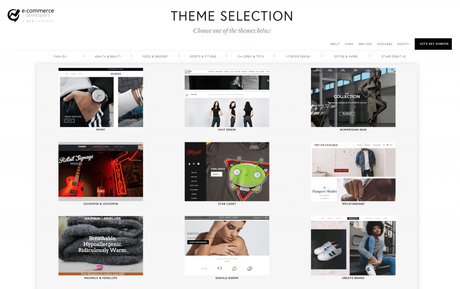 e-CommerceWebsiteDevelopers.com
e-CommerceWebsiteDevelopers.com Why are manufacturers shifting to a Direct-to-Consumer strategy?
Direct selling allows manufacturers to reinforce further MSRP ( manufacturer's suggested retail price.) It also allows them to communicate with customers about price points-all without any third-party interference.
Furthermore, selling Direct-to-Consumers allows them to collect first-party data.
In other words,
Understanding consumer data leads to better promotions. It also leads to better products, better customer relationships, increased sales and more profit.

Manufacturing Strategy in the "Old Days"
In the old days, manufacturers sold to wholesalers. These then sold to retailers who sold to the end customer.
This type of transaction fostered close, loyal and profitable relationships with third parties.
Today, the internet has changed all this.
Unfortunately, many manufacturers still hesitate to sell their products Direct-to-Consumers. They fear it will jeopardize their relationships with distributors and retailers.
Why?
Because in the old days, manufacturers who wanted to sell direct-to-consumer required massive capital investment for brick-and-mortar stores and more employees.
This business model has served commerce for hundreds of years.
Manufacturing Strategy in the "New Days"
Digital commerce changed all that.
In other words,
The internet opened new channels of distribution and it's forcing the marketplace to evolve.
Therefore,
If manufacturers want to stay relevant, they must also evolve. There is no excuse now. Thanks to technology, today's investments needed are much smaller than in the past.
Furthermore,
A single eCommerce store is like having a store on every corner in every city.
This is the main reason why manufacturers are now shifting to a Direct-to-Consumer business model.
What do we call eCommerce websites that sell Direct-to-Consumers?
Most companies that sell Direct-to-Consumers get referred to as B2C companies. We will go into more detail about B2Cs later in this post.
As mentioned earlier, eCommerce has two distinct groups. One is the Direct-to-Consumer (i.e., Dollar Shave Club) and the other the online resellers (i.e., Amazon).
Amazon Pros
Amazon Marketplace lets vendors of all sizes sell products alongside Amazon's products.
In other words, Amazon Marketplace offers access to customers through an established platform.
Taking advantage of Amazon's massive traffic is one way to get started fast.
Amazon Cons
Brands don't get the customer data, nor do they own that customer relationship. Not having a direct relationship with customers, puts brands at the mercy of others. Especially their reputation.
It is also important to remember that Amazon " owns " the customer relationship.
Thus, brands end up trading some aspect of the customer relationship. All this for the access Amazon provides.
Additionally,
You will have to deal with limited brand recognition. Also, compete in a cramped space where there are lots of similar products.
What's worse, you will be building Amazon's business, not yours.
Your Amazon Strategy:
Build your own branded experiences in your own sales channel . Don't spend your money building Amazon's. To maximize your D2C strategy, use Amazon's Marketplace as a marketing tool. It will help you gain exposure.
Also, add your company's coupon or product inserts in the box. This way, there will be a reason for your customer to visit your D2C online store after they receive your package.
Research shows that the #1 reason 80% of eCom stores fail Is due to poor website design. Even worse, 42% of people will not buy from an ugly website!
Why Do eCommerce Websites Fail?
The question is:W hat parts of poor design are the reasons for such a high failure rate?
Customers look at load time and customer experience.
In general, the better the customer experience, the higher the conversion rate.
Most Important Goal When Building Your Brand
One of the most important goals for building your brand is to make sure your online store is beautiful . Make sure it is elegant, and it does not look cheap or cheesy.
In other words,
Customers do not trust poorly designed, ugly looking websites.
So make sure not to compromise your brand's reputation. Do not buy ugly, poorly designed website themes.
Below are the most common reasons:
- Load time is slow
- Customer Experience:
- Website is ugly and cheap looking
- Product value isn't clear, and navigation is confusing
- Cross-Device Capability
- SEO Rankings
So let's delve deeper into each one.
#1: Website Loading Speed:
When looking to expand online, website loading speed is a critical factor to consider. Make sure you keep this in mind when exploring eCommerce Platform options.
So, how fast should your website load?
Forty-seven percent of people say they expect pages to load in two seconds or less. Sixty-four percent of mobile users expect sites to load in less than four seconds.
Google Research
Based on Google research, most websites in the U.S. load a lot slower than expected. Lots of eCommerce stores do not meet the minimum load speed expected by customers,
Take a look at the Average Speed Index research by Google:
What does it mean?it means that if you can speed up your website load time, your conversion rates will increase.
This will give you an advantage over your competitors with slower loading sites.
That's because 32% of visitors will abandon sites that have not loaded within 3 seconds. The lower you can get that number; the higher your conversion will be.
Below are a few things that affect page load speed:
- Theme Design
- SaaS or Hosting type (cheaper is not always better)
- Compress files
- Reduce images sizes
- Reduce HTTP requests
- Enable browser caching
- Install a CDN (content delivery network)
- Host videos using an external service (such as Vimeo).
- Uninstall plugins, not in use
Pro Tip: Aim for your store pages to load in three seconds or less. Load times should not exceed 3 seconds. Anything over 3 seconds will lead to poor conversions and thus reduced sales.
#2: Customer Experience:
Data shows the three main reasons customers leave a site before purchasing:
- The store-brand looks cheap and ugly
- The product value isn't clear, and the navigation is difficult
- The mobile experience is poor.
It is imperative to build a beautiful eCommerce store that matches your brand. Do not fall into the trap of buying a cheap-looking theme to save a few dollars.
When you hurt the " look and feel" of your online store, you diminish your brand.
Data shows that even if you make changes later and update your "look and feel," the " bad " feeling persists. So your brand's poor image will continue in your customers' minds even if you make fixes later.
Present your eCommerce website value clearly.
Do not offer endless numbers of products across many categories or niches. Instead, understand who your customer is. Make it crystal clear how your product(s) solve their pain.
In other words,
Your brand has to present compelling reasons. It has to show the prospective customer why they should buy from you.
This benefit should highlight this. So it sets you apart from every other competitor in the market.
Your eCommerce Platform must be MOBILE ready.
Most people use their desktop to buy online. But, data shows that the initial product discovery begins on mobile.
In other words:
Mobile-based pre-purchase is on the rise. Before buying, consumers are relying more and more on their phones to research products.
#3: SEO Rating:
A successful eCommerce site will boast a comprehensive SEO strategy throughout its pages.
So, what is the best eCommerce platform for SEO?
It depends.
Some are better than others when it comes to SEO
At the end of this post we will cover the basics for each one so you can first decide which platforms meet your needs.
Pro Tip: Be sure to understand the differences when comparing side-by-side performance. A minor gain in SEO rating at the sacrifice of other integral components may not be worth it.
If you're looking to expand your brick-and-mortar retail store, or if you want to put your professional service online. Direct-to-consumer selling online has many long-term strategic advantages.
For starters,
One of the main benefits of starting your online store is cost . The amount required to start or expand an online business is a fraction of a physical store.
Additionally, you can have your D2C store open 24/7/365. All without any geographical limitation, even if you offer services.
Here are seven reasons why a Direct-to-Consumer eCommerce Website may be an excellent option for you:
International Reach:
With a physical store or local professional service, you have geographic limitations. Generally speaking, you can only sell to nearby markets.
For example., let's say you have a store in Florida and want to sell in California. In this case, you would need to open another physical location.
But, with a D2C online store, you can sell your products or services across the globe.
Open 24/7/365:
Physical businesses usually have limited hours. An online store remains " open " 24 hours a day, seven days a week, 365 days a year, regardless of location.

Cost Savings:
Direct-to-Consumer online companies have lower operating costs, especially if you compare it to a physical store or professional office.
Generally speaking, operating costs are less than these physical stores. The number of personnel requirements is usually a lot less than brick-and-mortar. Further, there is no rent to pay. Only SaaS or hosting fees.
Brand Building:
With lower operating costs. Understanding and targeting ideal customers, thanks to online analytics software. The ability to reach a global audience. And last but not least. Having a high-quality, trust-building eCommerce store, you can build an unstoppable brand.
It is essential because you can pass on the savings to the consumer. Which, in turn, increases your market share, which then leads to more profit. It is even more true if you have a quality product or service and a beautiful high-quality online store .
Inventory Management:
You can now automate your inventory management using online tools. It is one of the most important ways to save thousands of dollars in inventory and operational costs.
Furthermore,
You can now manage your entire stock across many channels, such as eBay, Amazon, Etsy. All at the click of a button.
Data-Driven Marketing:
Online stores can collect large amounts of 1st-party data. It is one of the most critical online vs. offline differentiators.
First-party data allows business owners to grow their business faster. This is due to the fact that a company can pivot quickly based on real-time customer feedback. Which in turn leads to more profit. And then to higher business value.
Furthermore,
Data allows for laser-focused campaigns. It lowers customer acquisition expenses, reduces marketing costs, and improves conversion.
Quality of Life:
eCommerce online stores are location independent. As long as you have a laptop and an internet connection, you are all set. You can then run your eCommerce business from anywhere in the world.

Most people think of eCommerce as a Business-to-Consumer (B2C) business model. But, there are many other types.
These include online professional services, auction sites, internet banking, online ticketing, online reservations, and Business-to-Business (B2B) transactions.
Furthermore,
The eCommerce mobile use has seen a growth explosion lately. eCommerce using mobile devices is known as 'm-commerce.'
So, let's go over the four main types of eCommerce Websites:
Business to Consumer (B2C):
B2C is an acronym for " business-to-consumer. "
In other words,
When a business sells goods or services to individual consumers, it is a B2C business model.
But in regards to online businesses, B2C is when the sale takes place through an online store. For example, you buy an outfit from an online retailer.
A few examples of B2C online retailers are ModCloth, Newegg, Wish, and Overstock.
Business to Business (B2B):
B2B is an acronym for " business-to-business."
In other words,
When a business sells goods or services to other companies, it is a B2B business model.
But with regards to online businesses, B2B is when the sale takes place through an online store. For example, an offline retailer buys products in bulk from an online wholesaler.
B2B online retailer examples. Polycom, Nicotine River Wholesale, V-Belt Guys Commercial Accounts, eJuices, ScaleTrains Manufacturers, and Chocomize.
Consumer to Consumer (C2C):
C2C is an acronym for " consumer-to-consumer."
In other words,
When a consumer sells goods or services to individual consumers, it is a C2C business model. It facilitates commerce between private individuals.
C2C eCommerce sales usually take place on third-party online stores referred to as marketplaces. These take care of the entire transaction details. For example, you sell your old bicycle on eBay to another consumer.
A few examples of C2C online marketplaces are eBay, Olx, Etsy, and Craigslist.

Consumer to Business (C2B):
C2B is an acronym for " consumer-to-business."
In other words,
When a consumer sells goods or services to businesses, it is a C2B business model.
But in regards to online sales, C2B eCommerce is when the sale takes place through an online store.
A few examples of C2B online transactions are:
- Influencers offer their online audience exposure to a product in exchange for a fee.
- A photographer licenses a photo to a business to use.

eCommerce stores can take on a variety of forms. Each one involves different transactional relationships between businesses and consumers.
There are also different objectives to consider before building an eCommerce online store.
This is the reason why it is so important that you select the top eCommerce platforms for your business depending on your needs (more on this later on this post.)
Let's go over a few of them:
Direct-to-Consumer:
Direct to the consumer means you are selling your product to your end customers. And in the process, you are not using third-party retailers, wholesalers, and others.
In other words, no intermediaries.
Some examples of the best known direct-to-consumer companies are:
Wholesale:
Wholesale distribution means the sale of products in bulk to retailers or distributors. They then sell them Direct-to-Consumers.
In other words,
Wholesale is the activity of selling goods in large quantities, usually to distributors. Most of the time, these products sell at lower prices to resellers. They, in turn, sell them in smaller quantities to the end-consumer for a higher price.
Put another way,
The word wholesale means selling in bulk quantities. Retail stands for the sale of merchandise in small amounts.
Examples of wholesalers include:
- Christmas-tree wholesalers who buy from growers and sell to retail outlets.
- Restaurant food suppliers.
- Clothing wholesalers who sell to retailers.
Dropshipping:
Dropshipping means selling a product, manufactured and shipped to the end-consumer. But instead of getting sent by the vendor or retailer, it gets shipped by the supplier or manufacturer.
In other words,
First, a customer places an order for your product in your online store. You then collect the money. Next, you forward the purchased order and shipping details to your dropship supplier. Finally, you pay the supplier the agreed-upon wholesale price for the product.
The profit usually comes from the difference between the two-the cost paid by the third-party seller to the supplier and the price paid by the end-consumer to the third-party seller..
In other words,
The third-party seller pays for the product at a discount. Then the profit comes from the difference in the initial cost of the item, minus the price it sold.
Ten Shopify Dropshipping Store Examples:
Crowdfunding:
Crowdfunding means you want to raise money from consumers. Usually done before your product becomes available for sale. Often startups use this strategy to raise capital for their ventures.
In other words,
Crowdfunding is the activity of raising money. Most of the time, this is an alternate finance method. The products are pre-promoted to consumers. They then invest in (or donate to) crowdfunding projects. In return, they expect a potential profit or reward.
Put another way,
Crowdfunding means selling a wide range of for-profit, entrepreneurial ventures usually offered before they get built. Or if for social causes, the raised charity funds go to social or community projects.
Examples of Crowdfunding projects include:
Examples of crowdfunding projects include: Raising funds for funeral expenses (social cause). Raising financing to manufacture Premium Skateboards for Toddlers (business venture.)
Subscription:
Subscription means you want to create an automatic recurring sale. It could be a product or service. The subscription will continue until the subscriber decides to cancel.
In other words,
Subscription is the activity of selling a product or service on a repeat basis. For physical products, the online retailer usually ships the products monthly or quarterly.
Put another way,
Subscription implies a service that pays continuously. Customers of a subscription system become members. This strategy has the potential to increase company value. It happens because you now have steady repeat customers.
Examples of Subscription online companies include:

Physical Products:
Physical Products means any tangible good that requires inventory to get replenished. The orders get shipped to the customers after they buy them.
In other words,
Physical Products in eCommerce is the activity of Direct-to-Consumer companies selling tangible goods. Physical products get sold online via eCommerce stores. They can also get sold via mobile apps, live chats, chatbots, and voice assistants.
Put another way,
Physical Products are goods that you can touch. They are tangible, solid, dust, or in a liquid state inside a container. They have height, weight, and dimension.
Examples of Physical Products online stores include:
- Everlane Fashion
- Patagonia Outdoor Gear
- DeWalt hardware
- Wayfair Furniture.
Digital Products:
Digital Products means any downloadable digital good or streamlined media. The orders get sent to customers through email, or they get downloaded from the internet.
In other words,
A Digital Product is any product that can get sold in a digital format. Digital Products are easier to manage than physical products. They are also less expensive to produce.
Examples of Digital Products include:

Services:
Services are the action of helping or doing work for someone else. The orders get completed with the actual physical presence of the provider. Usually, after the customer prepays for the service online.
In other words,
The service provider's time can get purchased for a fee. Thus, the service activity is a skill or set of skills performed in exchange for compensation.
Put another way,
An online service can get purchased using an eCommerce online store. The customer transmits the payments of funds over an electronic network. The service provider then schedules the service date and/or time.
Examples of Services include:
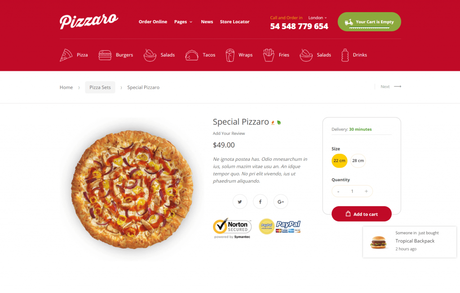
If you are starting a new online store. Or if you are moving away from the traditional storefront to an online version. Getting this right is of utmost importance.
Selection best practices include:
- Pricing and Payment
- Integrations
- SEO Friendliness
- Mobile Friendliness
- Customer Service
- Security
- Scalability
- Product Management
- Order Management
- Return Management.
Is Shopify the best eCommerce platform?
We are Shopify developers , so we are a bit biased here. But the truth is, it depends on what type of business you have, what you are looking for and what your goals are.
Put another way:
There are many things you can do to know what to look for ahead of time. Including understanding which platform works best.
But it's essential first to get the basics down.
In other words,
You want to make sure that the platform you select meets your current and future needs. That's the foundation.
Then, once you get your foundation in place, dive deeper into each platform. Make sure you do this before committing to any of them.
That is why we created an eCommerce Platform Comparison chart shown below.
eCommerce Platform Comparison:
Below are the Top eCommerce Platforms you need to know in 2020:
- Hosting Type: SaaS (Software as a Service) & CaaS (Facebook & Instagram Shops)
- International Options: Yes
- Important Note: Shopify is currently the best eCommerce platform for small business. It services over 1 million businesses across 175 countries.
- Target Market: Small businesses, especially small-to-medium-sized companies that need lots of hand-holding.
- Best B2B eCommerce Platform: Yes
- Enterprise eCommerce Platforms Shopify: Yes
- Upgrade and Scale: Yes through their Shopify Plus version
- Support Rating: A+
- Analytics: Available
BIGCOMMERCE:
MAGENTO:
WOOCOMMERCE:
SQUARESPACE:
WIX:
BIG CARTEL:
SALESFORCE CLOUD COMMERCE:
VOLUSION:
- Hosting Type: SaaS (Software as a Service)
- International Options: No
- Important Note: It is one of the oldest (and it shows) platforms in the market.
- Target Market: Best for startups. Also, for small business owners who want to get started fast.
- Upgrade and Scale: Yes. Through their Business and Custom tiers.
- Support Rating: B
- Analytics: Available with integrations
Post COVID-19, small and medium-sized businesses have to face a new truth. The world has moved online.
More than 205 million consumers in the United States shop online. They spend over $3,000 per person per year. Yet, many eCommerce companies are still struggling to become profitable.
Why?
The #1 reason 80% of eCom stores fail is due to poor website design. What is even worse, 42% of people will not buy from an ugly website!
Most common reasons people don't buy from your eCommerce website:
- Load time is slow
- Product value isn't clear
- Navigation is difficult
It means you need to take the time to figure out the best eCommerce platform to take your business online . It will be the most critical business decision you will soon have to make.
Building customer trust is a crucial step towards the success of any online business. Thus you have to make sure your brand gets set up to build trust. Not only to make sales.
It means,
If you are struggling to convert your customers, there might be a trust issue.
Next Steps:
1. Once you decide what kind of store you want to build, head to .
2. Once per month, we have a beautiful Custom Built Limited edition Shopify store go live. If the current custom built edition does not meet your needs, make sure you sign up to get notified. Our drops get sold out fast.
3. Finally, after you sign up, you will get detailed instructions. Submit your images, a little text, and your store will be live within 24 hours.
Conclusion & Final Thoughts:
I hope you enjoyed this beginner's guide. I wanted to go beyond answering " what are eCommerce Platforms? " and give you a few concrete steps to get started.
As you can see,
Launching a custom-built, limited edition D2C store in less than 24 hours is easy. Of course, if you follow the instructions we've given you. True, there's a lot to learn. But the benefits outweigh the time and effort.
- Make sure you head toto get your limited edition custom-built store.
- Remember, we have a monthly drop-in of different stores. Once they are gone, they are gone for good. If the current limited edition does not fit your needs, make sure you sign up to get notified for the next drop.
- Finally, after you sign up, you will get detailed instructions. Submit your images, a little text, and your store will be live within 24 hours.
Those three steps are the foundation for getting your store ready fast if you want to have a custom-built, limited edition store ready to go live in 24 hours or less.
Once you feel like you've mastered those, start looking into the more advanced stuff, like Blockchain and Supply Chain.
[thrive_leads id='4998′]
Now It's Your Turn
So that's it for my guide to eCommerce Platforms
Now I'd like to hear what you have to say:
- Which strategy from this guide are you going to try first?
- What are your plans for your Direct-to-Consumer store?
- Do you already own an Offline Retail Store or Professional Service? (do tell!)
Either way, let me know by leaving a quick comment below (bottom of this page.)
You Might Also Enjoy...
More Resources...

